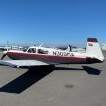BFR / Flight Training Plans / IPC workflow (+/- with advanced avionics)
-
Members Online
- Greg Ellis
- EricJ
- Graf_Aviator
- prillayo03
- CAV Ice
- dzeleski
- Skyland
- SKI
- KSMooniac
- redbaron1982
- Tommooney
- AndreiC
- raymondscott0321
- Ragsf15e
- Joe Linnebur
- Marc_B
- 802flyer
- PeterRus
- Mark89114
- 1980Mooney
- Mike Reed
- donkaye
- kortopates
- PT20J
- Rusty Pilot
- Flyler
- Ibra
- LOCOLJ
- atpdave
- rahill
- bamace
- Ricky_231
- Rsmithref
- WilliamR
- philiplane
- Nilium
- TLWM-21
- Blaze
- Will.iam
- M20E for me
- Nico1
- TheAv8r
- Jrags
- PilotX
- eman1200
- CalebH
- Lionudakis
- blakeforslund
- Igor_U
- Bolter


Recommended Posts
Join the conversation
You can post now and register later. If you have an account, sign in now to post with your account.